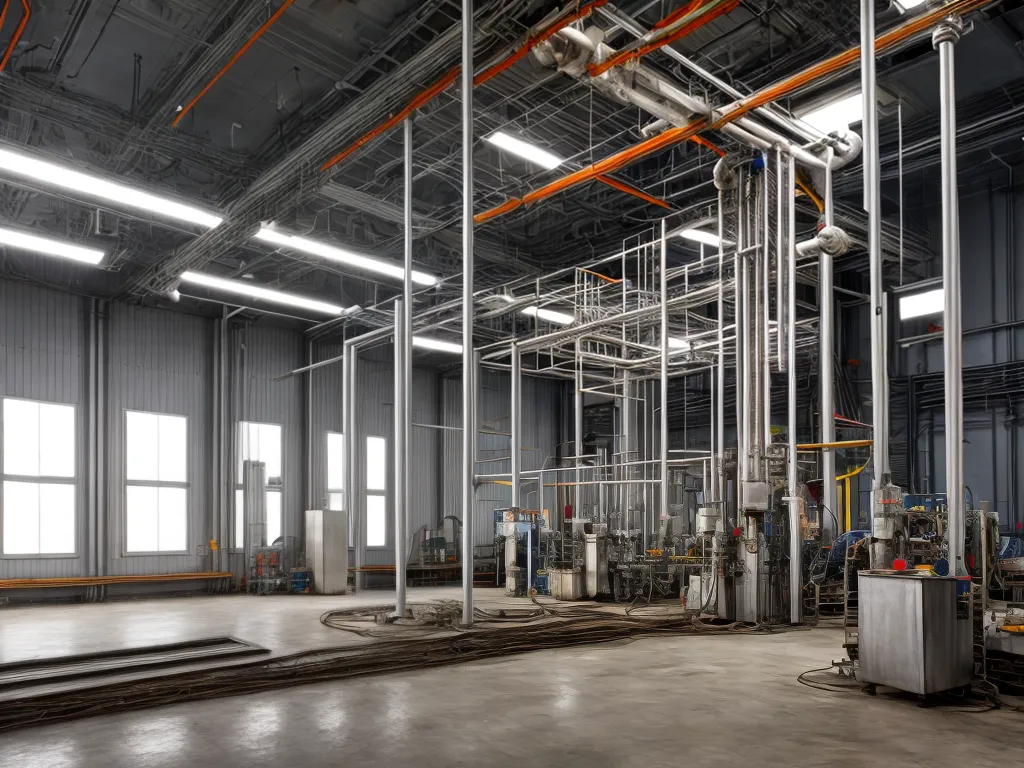
Industrial Wiring Standards - Are The Old Methods Still Best?
Industrial electrical wiring is crucial for safely powering machinery and equipment in factories, plants, and other industrial facilities. While wiring methods and standards have evolved over the years, in many cases the old techniques are still commonly used and remain entirely valid options. In this article, I will explore some of the most popular old and new industrial wiring methods, outlining their key features, pros and cons, and applications to examine if the tried and tested old standards are still the best approaches for industrial settings.
Old Wiring Methods
Conduit Wiring
Conduit wiring has been used in factories and industrial facilities for over 100 years. This method runs insulated wires through metal or plastic conduits that provide physical protection and an organized pathway for the wires.
Key features:
- Rigid metal conduit provides excellent physical protection for wires
- Plastic conduit is lightweight and corrosion resistant
- Permits easy pulling and replacement of wires
- Organized pathway for running multiple circuits
While rigid metal conduit can be more expensive and time-consuming to install than other methods, it remains a very robust and reliable wiring system for industrial applications. Plastic conduit is also frequently used as a simpler alternative.
Open Wiring
Open wiring involves running insulated wires across surfaces and structures without any conduit or raceway. The wires are supported by porcelain knobs, tubes, cleats, or staples.
Key features:
- Simple, inexpensive, and quick to install
- Wires are exposed and easily accessible for maintenance
- Not suitable for wet, corrosive, or physically demanding environments
This very basic "exposed" wiring method is falling out of favor due to safety concerns, but is still grandfathered into some industrial facilities. When well maintained, open wiring can be a cost-effective solution.
Armored Cable (AC)
Armored cable, also known as BX cable, is insulated wiring wrapped in a flexible metal armor. The metal sheath protects against physical damage and moisture.
Key features:
- Tough armor resists abrasion and punctures
- Provides good ground path continuity
- Quick and simple installation
Armored cable offers sturdy mechanical protection for industrial wiring applications involving vibration, moisture, or physical damage risks. It avoids the hassle of installing conduit while providing similar protections.
Newer Wiring Methods
Cable Trays
Cable trays provide an orderly, open-air pathway for running cables along industrial ceilings and structures. Cables are laid into wire mesh trays and secured.
Key features:
- Clean, professional, orderly appearance
- Accessible for maintenance and additions
- Galvanized or stainless steel construction resists corrosion
- Requires no conduit - faster, simpler installation
Cable trays are an excellent wiring method for factories and plants, offering tremendous flexibility for routing cables overhead. They facilitate maintenance, modifications, and expansions much better than conduit-enclosed wires.
Busway (Bus Duct)
Busway power distribution systems distribute power through prefabricated busbars enclosed in a metal housing. Tap boxes allow connections to machines.
Key features:
- High capacity power delivery to multiple loads
- Enclosed design protects conductors
- Easy to modify and rearrange circuits
- Less wiring labor compared to cables
Busway allows centralized power distribution that can be reconfigured as needed. This modular flexibility suits many industrial settings that have frequent equipment moves and layout changes.
The Verdict
While newer methods like cable trays and busway improve flexibility, accessibility, and speed of installation, time-tested techniques like conduit and armored cable wiring remain staples in industrial facilities. They provide rugged mechanical protection tailored for factory conditions.
The old standards are still best suited for:
- Wet, corrosive areas
- High physical abuse conditions
- Tight, restricted spaces
New methods excel in:
- Ease and speed of modifications
- Accessibility for maintenance
- Orderly overhead cable runs
- High capacity distribution
In summary, the old wiring methods are still excellent choices for many industrial applications, but the newer approaches facilitate flexibility and future expansions. Many facilities use a combination of both to gain the benefits of each while meeting code requirements. Carefully evaluating the pros and cons for each area of a facility allows creating an optimal wiring plan.